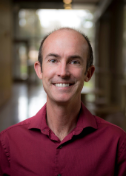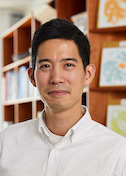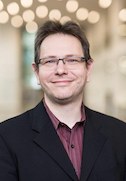Vacc-elerator
Peter Kwong
Vaccine Research Center, NIH
Published December 17, 2013
Peter Kwong was putting the finishing touches on his work at the University of Chicago solving the structure of ?-bungarotoxin, a neurotoxin in snake venom, when structural biologist Wayne A. Hendrickson called from Columbia University. "Would you be interested in working on CD4?" he asked.
The year was 1987. Kwong, who was doing graduate research in the lab of the late Paul B. Sigler, a pioneer in structural biology, was in the process of moving to Yale.
At the time, CD4, the receptor for the human immunodeficiency virus, was so new that Kwong hadn't even heard of it. But he jumped at the opportunity. "That's what's so great about structural biology," says Kwong, who is now chief of the Structural Biology Section at the Vaccine Research Center (VRC) at the National Institutes of Health. "As a graduate student, you can work on the cutting edge."
Kwong, Hendrickson and Seongeon Ryu, another graduate student from the Hendrickson group, published their CD4 solution in Nature in 1990. In 1998, Kwong and Hendrickson solved the gp120 glycoprotein, the part of the HIV virus that allows it to gain entry into host cells and also the part that triggers the production of virus-neutralizing antibodies, in complex with the CD4 receptor and a neutralizing antibody.
By the time Kwong finished graduate school and post-doctoral training at Columbia, about 20 therapies for HIV had been developed, but no vaccine. So he decided to join the fledgling VRC with hopes of contributing to an effective HIV vaccine.
That end has not yet materialized, but Kwong recently turned vaccine development on its head with a new, structure-based approach he calls "antibody to vaccine." Using this approach, he has designed a vaccine for respiratory syncytial virus (RSV), a virus that hospitalizes about 100,000 children in the U.S. each year.
Kwong's approach blends what he calls the "East Coast" and "West Coast" schools of thought on vaccine development: The East Coast school says you need to understand the virus, while the West Coast school says you need to understand the immune system, because it is antibodies from the immune system that do the work.
"I'm somewhere in the mid-West," says Kwong, appropriately so, since he grew up in Chicago. "We start by understanding which antibodies work and then use viral antigens recognized by those antibodies to figure out the immunogens that can recreate those antibodies."
To reverse engineer the natural biological process, Kwong developed an iterative approach, identifying appropriate antibodies and the antigens that elicited them, and then using structural biology to refine the antigens into viable vaccines. The first step involves finding the antibodies humans make that actually work against a virus. Once a human has developed antibodies that effectively neutralize HIV-a, which can take years, it can take years to isolate these antibodies in human sera. So Kwong developed a bioinformatics shortcut called neutralization fingerprinting that allows him to easily pick promising sera samples from infected individuals. Once appropriate samples are identified, then appropriate template antibodies can be identified.
X-ray crystallography drives the next stages of the process, which involve determining the structural features of the antibody and antigen, then engineering that antigen to make it able to elicit antibodies like the original template antibody. "This process allows for a timeline of vaccine development that is potentially much, much faster," says Kwong, who solved the structure of RSV fusion (F) glycoprotein bound to a potent antibody, D25, in November 2012 and had the RSV F vaccine manuscript submitted to Science by July 2013.
SBGrid has been a key enabler for Kwong, whose lab is surrounded by virologists, immunologists, and vaccinologists. "Initially we wondered if we could succeed as an outpost," he says. "But that's what's so wonderful about SBGrid. We can import the latest technology and be part of a cyber community that allows us to be at the forefront of crystallography."
Kwong is now applying these technologies to other viruses, including HIV, though HIV is a formidable target. The variation of HIV in a single individual is equivalent to that of seasonal influenza globally, he says. "It's an enormous challenge."
-- Elizabeth Dougherty






























































































